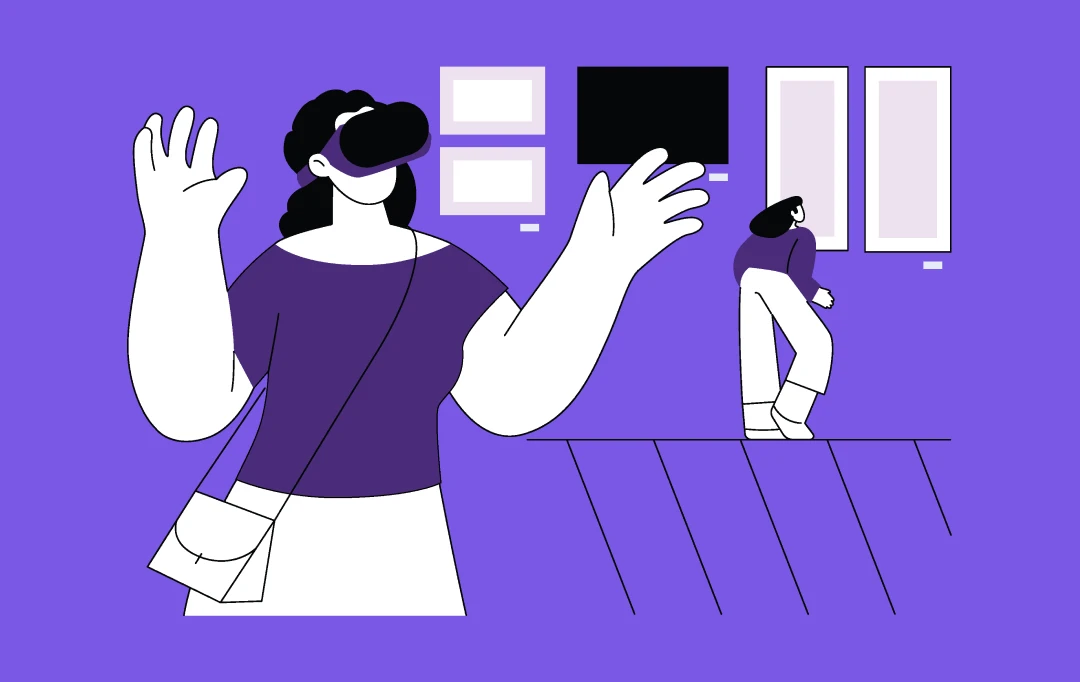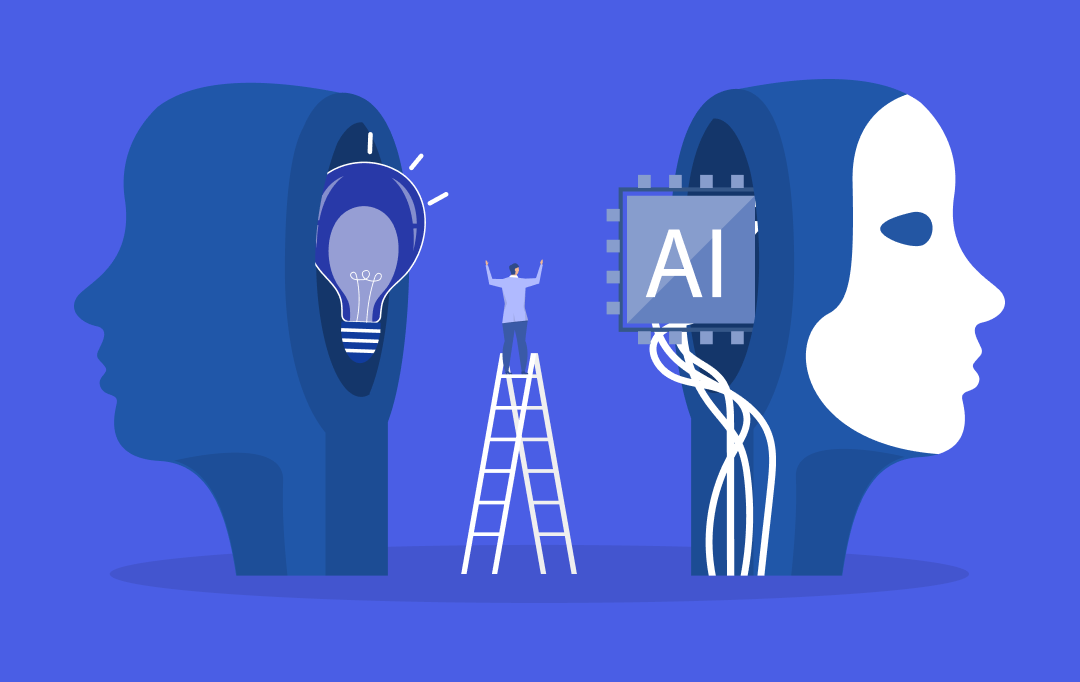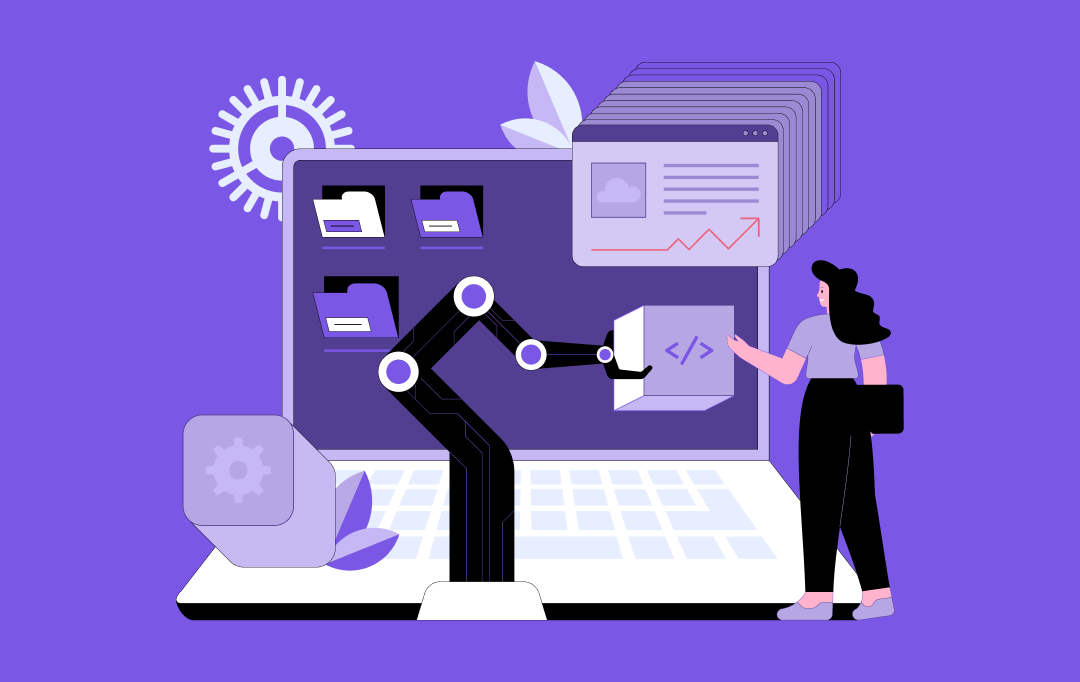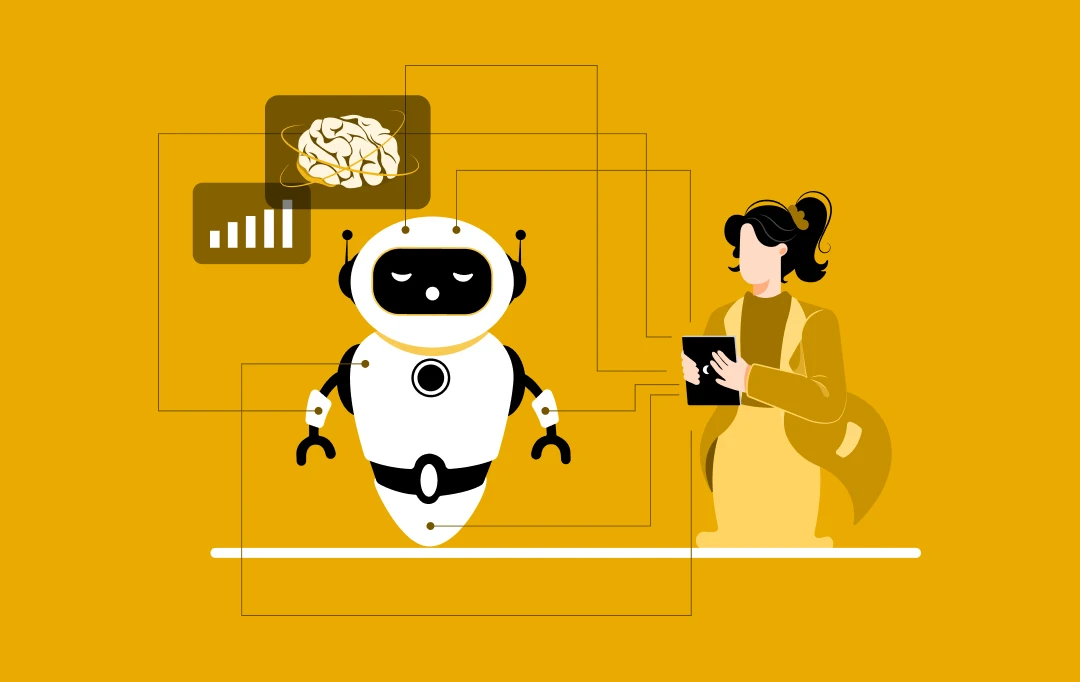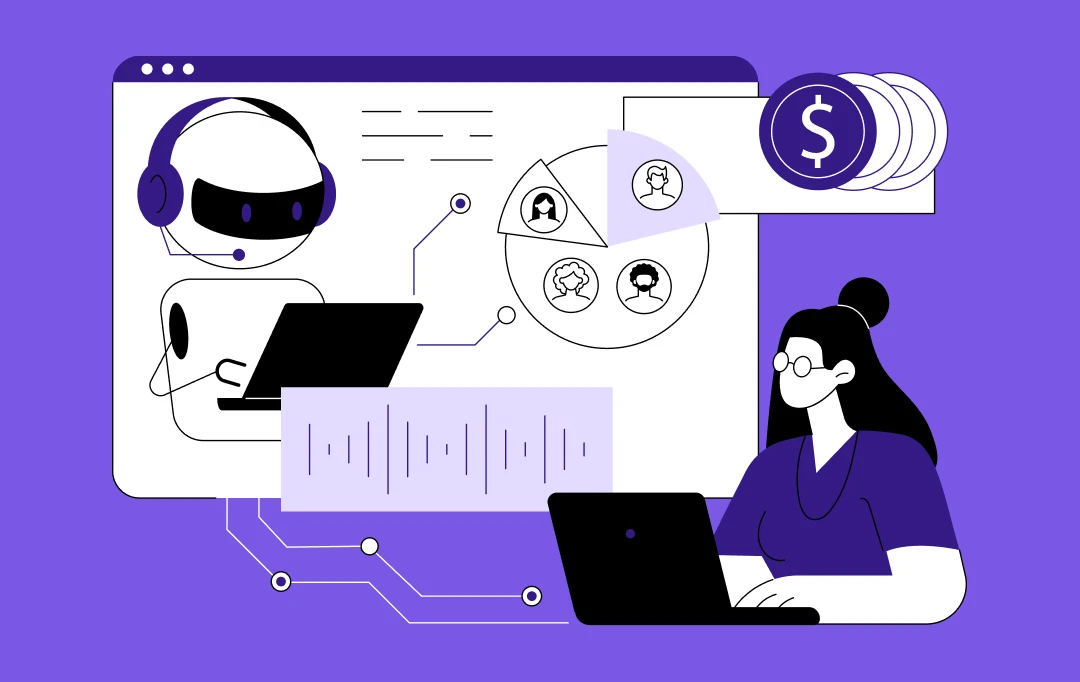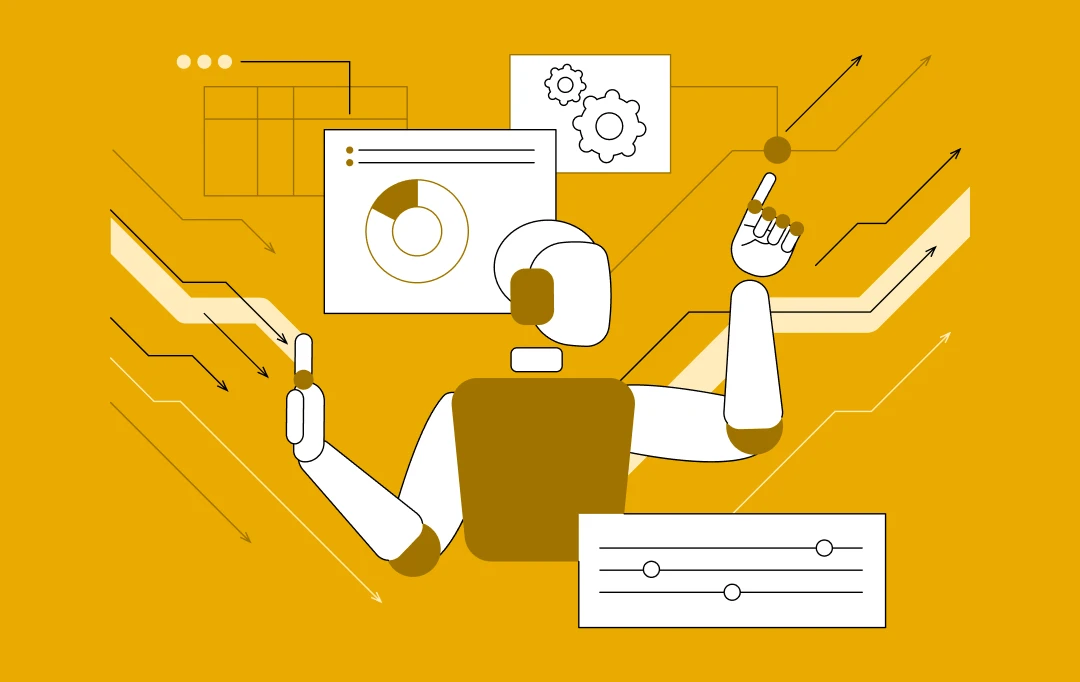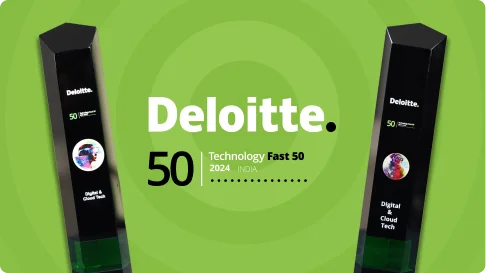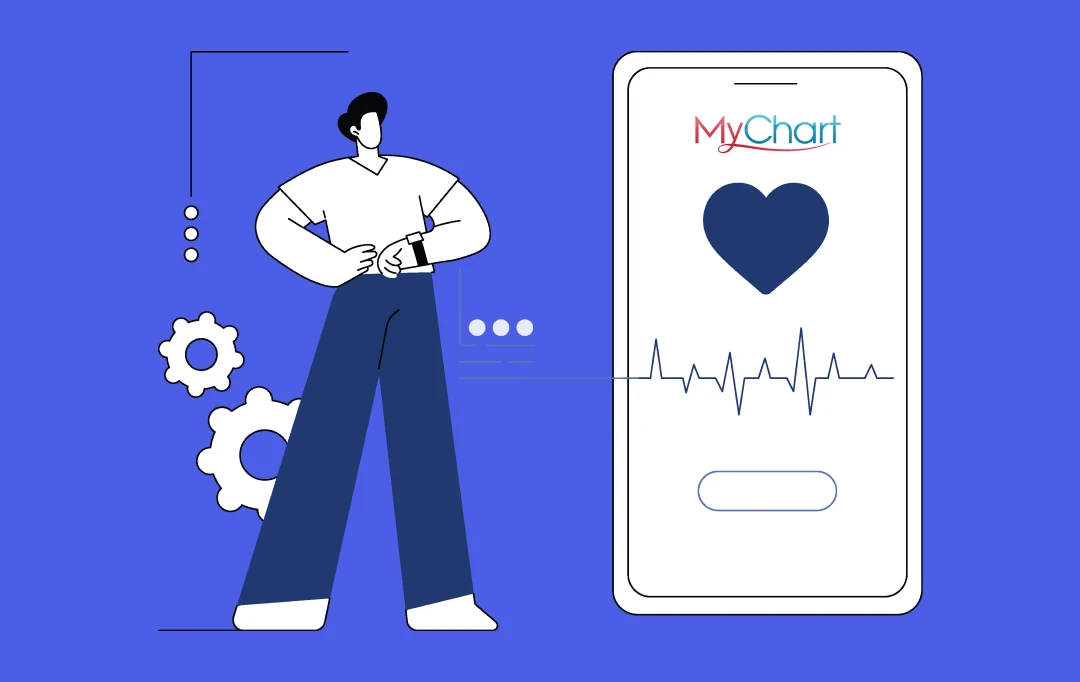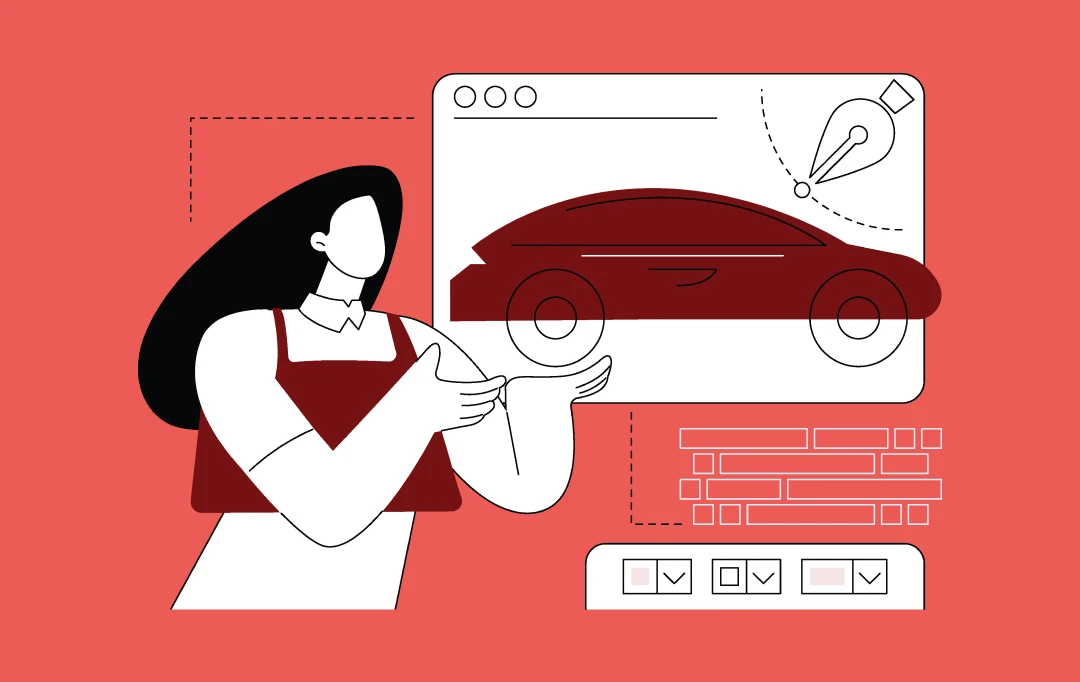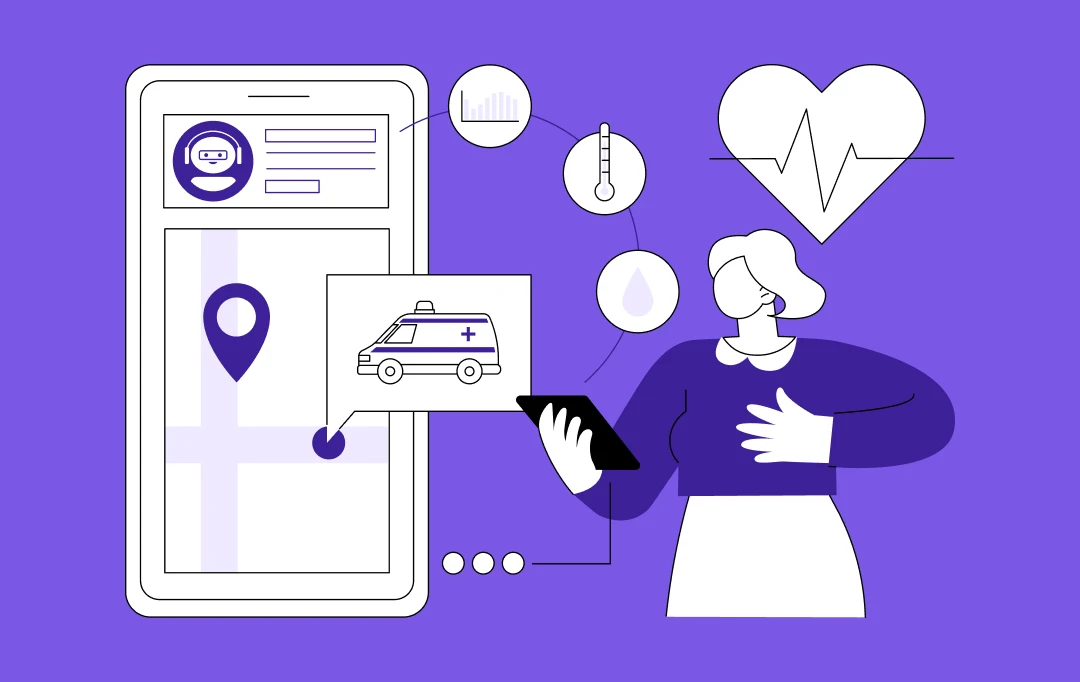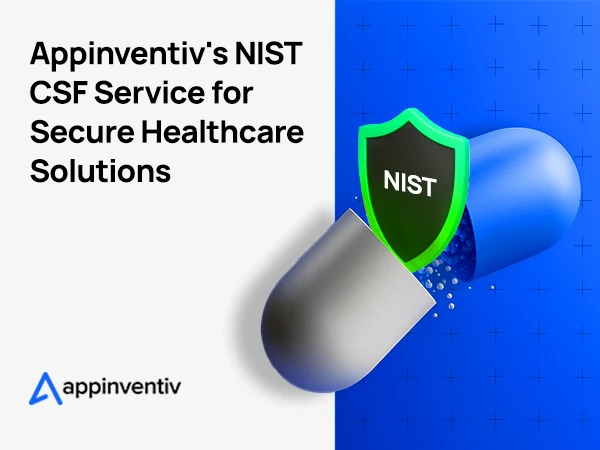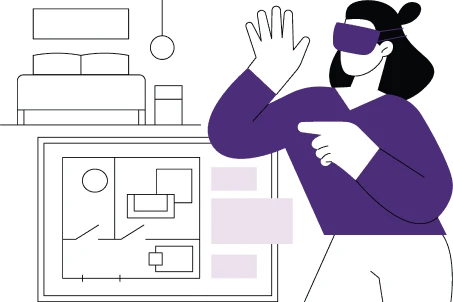- How AI Is Supercharging Virtual Reality - Market Dynamics, Key Technologies & Benefits
- 15 High-Impact Use Cases for AI-Driven Virtual Reality
- 1. Immersive Employee Training & Onboarding
- 2. Medical Simulation & Remote Surgery
- 3. Personalized Retail Experiences
- 4. Virtual Collaboration & Global Meetings
- 5. Intelligent Product Prototyping & Design Reviews
- 6. Adaptive Learning & Education
- 7. Customer Service & Support Simulations
- 8. Healthcare Therapy & Rehabilitation
- 9. Immersive Marketing & Brand Storytelling
- 10. Manufacturing Process Optimization
- 11. Real Estate Virtual Tours
- 12. Crisis Response & Emergency Preparedness
- 13. Entertainment & Adaptive Gaming
- 14. Recruitment & Talent Assessment
- 15. Data Visualization & Business Intelligence
- Industry Spotlights: Where AI-Driven VR Delivers Maximum Value
- Implementation Roadmap for Business Leaders
- Overcoming Challenges: What Leaders Should Know
- Actionable Steps for Decision-Makers
- Forming a Cross-Functional AI-VR Task Force
- Pilot Project Ideas to Demonstrate Quick Wins
- Appinventiv: Leading AI-VR Integration Services for Business Growth
- Frequently Asked Questions (FAQs)
Key takeaways:
- Market Growth: The AI in VR market is projected to surge from USD 21.2 billion in 2023 to USD 198.5 billion by 2033, with a CAGR of 25.0%.
- Transformative Applications: AI-driven VR reshapes industries with 15 use cases, including immersive training, personalized retail, and medical simulations.
- Business Advantages: AI enhances VR with personalization, automation, scalability, and data-driven insights, boosting efficiency and ROI.
- Strategic Adoption: Businesses can implement AI-VR through pilot projects, robust tech stacks, and cross-functional teams to gain a competitive edge.
Hyper-personalized experiences across businesses and industries have brought companies and industry-oriented enterprises under pressure to enhance customer satisfaction. However, thanks to the new entrant in the market, Virtual Reality, which not only caters to an immersive experience for customers but also enhances satisfaction, leading to increased conversion.
And if it’s AI + Virtual Reality, then this is the icing on the cake. Virtual reality has evolved into more than just a fascinating technology, and with the integration of artificial intelligence, it is also becoming an efficient business tool. The emphasis used to be on what can/would be possible in the future, but nowadays, we must deal with what is needed now in operations.
When AI gets integrated with VR systems, the result is something quite different from traditional approaches. AI-driven virtual reality applications now equip businesses with the remote monitoring capabilities to collaborate with the team effectively. Not only this, but companies also incorporate VR technology into their hiring approach, which enables them to streamline their hiring process while reducing overhead.
Various industries, such as manufacturing, healthcare, education, retail, and others, are engagingly leveraging AI-powered virtual reality to set the benchmark in customer satisfaction.
Bonus Read: AR/VR Trends and Predictions For The Upcoming Years
This article examines 15 practical Virtual Reality applications for businesses and industries that help you cut costs, improve workforce capabilities, and improve growth. We will also provide a clear implementation roadmap to help you integrate these powerful solutions into your operations.
Companies that figure out how AI is transforming VR will outpace their competition. This isn’t just about fancy tech anymore – it’s about creating better ways for people to connect and work together.
How AI Is Supercharging Virtual Reality – Market Dynamics, Key Technologies & Benefits
Market trends and investment signals unequivocally underscore this burgeoning synergy. The global AI in VR market is projected to soar to approximately USD 198.5 billion by 2033, up from USD 21.2 billion in 2023, with an impressive CAGR of 25.0% from 2024 to 2033. North America led the charge in 2023, accounting for over 38% of the market share and generating USD 8.2 billion in revenue.

What we’re really talking about when we say AI transforming VR is bringing actual intelligence into digital spaces—not just following preset scripts. The visual quality matters, sure, but the real breakthrough is environments that can think on their feet, adapt from experience, and respond as situations unfold. Several core AI technologies make this shift possible:
Machine Learning (ML)
VR systems can now pick up on how users behave, what they prefer, and even read emotional signals. This drives features like personalized VR learning paths and games that get harder or easier based on how well someone’s doing.
Natural Language Processing (NLP)
With NLP, you can actually talk to VR environments like you would to a person. Think about having a normal conversation with an AI character or just telling the system what you want it to do—it makes interacting in virtual spaces feel surprisingly natural.
Computer Vision
With this technology, VR systems can actually “see” and understand how users move in the real world and interact within virtual spaces. This opens up possibilities like accurate gesture recognition in VR and tracking, where people look to gather meaningful engagement data.
Generative AI
For content creation, this changes everything. Generative AI can quickly build massive, unique AI-generated VR environments, characters, and digital assets without the usual manual work, which saves both time and development costs significantly.
Must Read: Navigating Industry Challenges with Generative AI for Business
Powered by the above technologies, the AI in VR benefits for businesses are immense and far-reaching:
Benefits of AI in VR For Businesses
- Unmatched Personalization: Tailored experiences that adapt to each user, enhancing training, therapy, or engagement outcomes.
- Enhanced Automation: Automates complex tasks, from NPC behavior to content generation, optimizing resources for strategic priorities.
- Scalability & Reach: Efficiently deploys intelligent VR solutions, enabling broad enterprise adoption.
- Data-Driven Insights: Collects and analyzes user data for smarter business decisions based on behavior, performance, and preferences.
This seamless fusion is rapidly elevating enterprise VR experiences from impressive technological demonstrations to indispensable tools that drive tangible value across diverse organizational functions.
15 High-Impact Use Cases for AI-Driven Virtual Reality
The practical AI VR use cases are incredibly diverse, offering strategic opportunities that are redefining operations across nearly every industry. These aren’t just futuristic concepts; many are already delivering measurable impact today.
Related Read: AI, IoT, AR/VR Revolutionizing Technology For Sustainability
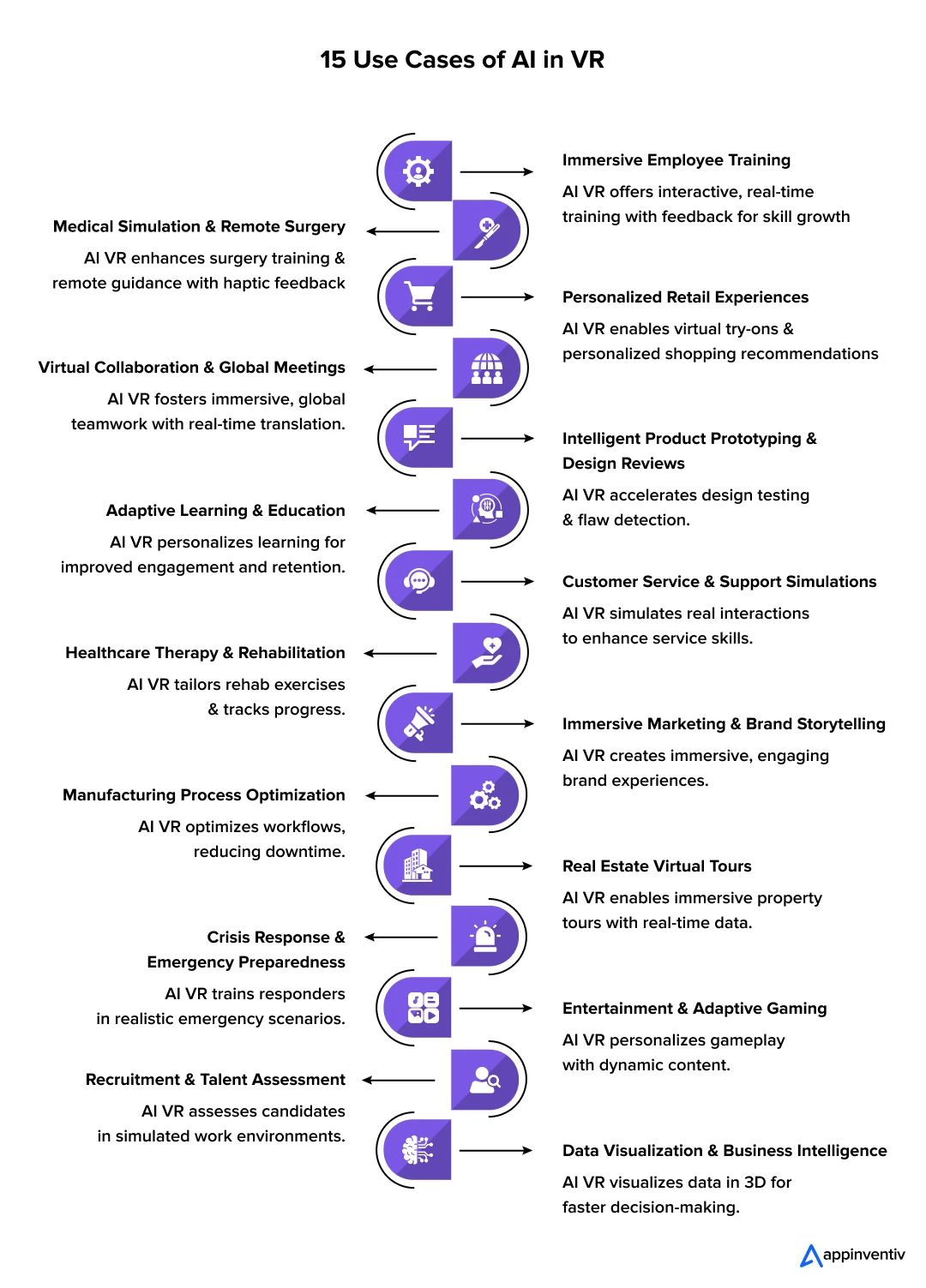
1. Immersive Employee Training & Onboarding
Use Case: Imagine a fresh hire going into a virtual representation of a real working environment, with an AI coach introducing them to the other staff members and demonstrating to them the workplace realities. For roles involving safety risks or technical expertise, AI VR training simulations can replicate hazardous or intricate environments—from managing industrial machinery to conducting precise surgical procedures—so employees can practice endlessly without real consequences. The AI controls their progress, identifies weak points, and provides individual instructions to accelerate the acquisition of skills and increase the memorization of knowledge.
How Business Leaders Can Derive the Best from This Use Case
Organizations like Walmart have successfully utilized AI and VR for large-scale employee training. Walmart’s “Walmart Academy” VR program has trained over a million associates in areas like customer service, management, and new technology adoption. They’ve found that VR training not only improves employee confidence but also leads to better performance in real-world scenarios.
Similarly, UPS employs VR for driver safety training, simulating hazardous urban environments to prepare drivers without real-world risks, significantly enhancing driver safety and reducing accidents. This translates directly into a more skilled, confident, and ultimately more productive workforce.
2. Medical Simulation & Remote Surgery
Use Case: Here’s how this works in practice – a surgeon needs to master a complicated heart procedure. Instead of waiting for the right patient case, they put on a VR headset and practice the same operation twenty times in one afternoon. The system knows exactly where their hands are and what they’re doing wrong. Medical schools are seeing huge benefits, too.
Students used to crowd around an operating table, most of them unable to see anything. Now they can all experience the surgery from the surgeon’s perspective. Remote assistance has become a game-changer.
How Business Leaders Can Derive the Best from This Use Case
Companies like Osso VR develop surgical training and assessment platforms that utilize VR to allow surgeons to practice procedures virtually, with AI providing performance feedback. Their platform is used by major medical device companies and healthcare systems to improve surgical proficiency.
Similarly, VirtaMed combines VR training with real surgical instruments and haptic technology, enabling realistic practice of minimally invasive surgeries.
These AI-driven virtual reality applications in healthcare ensure a more competent and confident healthcare workforce, leading to better patient outcomes and reduced operational risks.
3. Personalized Retail Experiences
Use Case: Picture walking into a store that already knows what you like. The VR retail experience lets you put on clothes and see how they actually look and move on your body. The sales assistants in these virtual stores remember your past purchases and suggest things you might actually want. Next time you visit, those types of products show up in better spots. Items that most people ignore get moved to the back. It’s like the store rearranges itself based on what customers actually care about.
This whole setup has helped furniture stores cut way down on returns. People know exactly what they’re getting because they’ve already seen it in their own space.
Bonus Read: AR in Retail
How Business Leaders Can Derive the Best from This Use Case
Retailers can leverage these AI-driven virtual reality applications to dramatically boost customer engagement, significantly reduce product return rates (especially for apparel and home goods), and increase conversion rates.
IKEA Place is a prime example, allowing customers to virtually place 3D furniture models in their homes using AR, leading to drastically reduced return rates. Similarly, brands like L’Oréal and Sephora use AI-powered AR apps (like L’Oréal’s Makeup Genius) that enable customers to virtually try on makeup, providing personalized recommendations and enhancing the shopping experience without physical product interaction. This innovative approach provides a distinct competitive edge in an increasingly crowded market.
4. Virtual Collaboration & Global Meetings
Use Case: Moving far beyond standard video conferencing, AI-driven virtual reality applications enable truly immersive and intuitive virtual meeting spaces. Diversified teams are able to meet as lifelike VR avatars, and they can cooperate on 3D models, brainstorm on shared electronic whiteboards, and chat with each other in a natural and spontaneous way that is similar to face-to-face communication.
AI can also significantly enhance these interactions through features like real-time transcription, intelligent summaries, and even instantaneous VR language translation AI, breaking down communication barriers for global teams.
Recommended Read: How Extended Reality is Driving Innovation Across Industries
How Business Leaders Can Derive the Best from This Use Case
Enterprises can significantly enhance remote team productivity, foster a stronger sense of connection among globally distributed employees, and reduce the need for costly business travel. Companies like Meta (with Meta Horizon Workrooms) are actively developing and deploying platforms for immersive collaboration, allowing teams to meet and work in shared virtual spaces.
Similarly, specialized platforms are emerging that leverage AI to create more dynamic and interactive virtual meeting experiences, aiming to replicate the nuances of in-person collaboration. This capability is crucial for future-proofing modern remote and hybrid work models and elevating enterprise VR experiences for distributed workforces.
Must Read: Metaverse And How It Is Reshaping the AR/VR World
5. Intelligent Product Prototyping & Design Reviews
Use Case: Product teams now build and test ideas faster using AI-generated VR environments. Designers used to build expensive physical models just to test one idea. Now they create dozens of versions in VR first. They find issues before spending money on real prototypes. Car companies test crash scenarios this way. Architects walk clients through buildings before construction starts. Medical device makers see how surgeons will actually hold their tools. Teams finish projects months faster. They catch mistakes that would have been expensive to fix later. The virtual testing saves companies millions in wasted materials and time.
How Business Leaders Can Derive the Best from This Use Case
With AI transforming VR, companies like Ford have long used VR for collaborative design reviews, allowing engineers from different locations to examine car prototypes in a shared virtual space. With AI integration, these sessions become even more powerful, with AI tools flagging potential ergonomic issues or manufacturing conflicts in real-time.
Similarly, ESI Group offers virtual prototyping solutions that leverage predictive physics modeling and hybrid AI to allow companies to virtually test and certify new designs, significantly reducing physical testing needs and accelerating time-to-market. Implementing this in product development drastically cuts down on time-to-market and significantly reduces research and development costs.
6. Adaptive Learning & Education
Use Case: Educational institutions have started using AI to enhance their VR learning platforms in ways that respond to individual student needs. A personalized VR learning environment monitors how students perform and adjusts the content based on their understanding. When students have trouble with certain topics, the system provides additional explanations or breaks complex subjects into manageable parts. Students who learn quickly get more advanced material to maintain their interest. The technology tracks how students learn best and adapts its teaching methods accordingly.
This approach creates educational experiences that match different learning styles and speeds, which results in better understanding and memory retention compared to standard classroom instruction.
Must Read: AR in Education
How Business Leaders Can Derive the Best from This Use Case
With AI transforming VR, educational institutions and corporate training departments can achieve higher engagement rates and demonstrably better learning outcomes. Companies like Adaptemy provide adaptive learning and AI solutions for education, allowing for personalized learning paths in K-12 and higher education by leveraging AI to analyze learning needs and chart paths to success. This ensures that every learner receives an optimized experience, maximizing skill acquisition and knowledge retention. This fosters a more skilled and adaptable workforce or student body.
7. Customer Service & Support Simulations
Use Case: Customer service training has become more effective through the use of intelligent VR scenarios that prepare agents for real-world situations. Representatives can practice with AI avatars in VR that display different emotions, speak with various accents, and present complex customer problems. The AI system evaluates how agents respond and provides immediate feedback on their communication skills, empathy levels, and problem-solving approaches. The technology can simulate how customers might react to different service strategies, which helps agents understand the impact of their responses.
How Business Leaders Can Derive the Best from This Use Case
Organizations like Bank of America have implemented VR training for their customer service teams, using AI to power interactive scenarios that help employees develop soft skills and improve customer support. This approach leads to more confident employees, with Bank of America reporting 97% of employees feeling more confident after VR training. Companies like Virti also offer immersive learning platforms that provide AI-driven soft skills training with interactive video simulations, directly enhancing customer service capabilities.
8. Healthcare Therapy & Rehabilitation
Use Case: Healthcare professionals have started using AI-enhanced VR to help patients in ways that weren’t possible before. Physical therapy patients can now exercise in virtual environments where AI watches their movements through virtual reality AI motion tracking and tells them when they’re doing something wrong. The system changes the difficulty of exercises based on how well someone is recovering and what their body can handle that day.
Mental health treatment has also improved with emotion-aware VR avatars that help people work through their fears, offer support when patients feel anxious, or guide them through relaxation exercises in a safe virtual space. Therapists can see how patients respond during these VR sessions and change their treatment plans based on what actually works for each person, which leads to better results than traditional methods alone.
Bonus Read: How Medical Augmented Reality Can Revolutionize Your Daily Lives?
How Business Leaders Can Derive the Best from This Use Case
Healthcare providers can offer more engaging, personalized, and scalable therapeutic interventions that often yield better patient outcomes. XRHealth offers VR-based home therapy systems that use proprietary virtual and augmented reality technology and data analytics for various rehabilitation needs.
Similarly, AppliedVR provides immersive solutions for chronic pain management, offering patients VR-based digital therapeutics that are being adopted by healthcare providers for pain reduction. This leads to faster patient recovery, reduced healthcare costs, and improved accessibility to specialized therapies.
9. Immersive Marketing & Brand Storytelling
Use Case: Companies have discovered that AI-driven virtual reality applications can create marketing experiences that go far beyond normal advertisements. Customers can enter virtual worlds that capture what a brand represents, handle products that look and feel real, or take part in stories where they make choices that affect the outcome. The AI changes these experiences while people use them, making sure the content matches what each person likes and cares about.
This creates AI VR transformation examples that stick in people’s minds and help them feel connected to brands in ways that regular ads cannot achieve. Marketing teams have found that people remember these virtual experiences much longer than they remember traditional commercials or print advertisements.
How Business Leaders Can Derive the Best from This Use Case
This use case offers unparalleled opportunities for brand differentiation and significantly deeper consumer engagement. Brands like Adidas have used VR campaigns to simulate intense experiences, such as mountain climbing, to promote their outdoor gear, creating deep brand affinity and viral content.
Patrón Tequila’s “The Art of Patrón” VR experience allowed consumers to virtually tour their hacienda and see the tequila-making process, fostering a strong connection to the brand’s heritage. This provides a powerful new channel for building robust brand loyalty and driving measurable sales growth.
10. Manufacturing Process Optimization
Use Case: Manufacturing companies now create exact copies of their factories, machines, and assembly lines in AI-generated VR environments so they can test changes without stopping real production. Engineers and managers can try out new equipment arrangements and see how different workflows might work before making expensive modifications to their actual facilities.
The AI runs detailed simulations that spot where production might slow down, predicts when machines need maintenance before they break, and teaches workers how to handle complicated assembly jobs using realistic virtual copies and touch feedback systems. This approach saves companies money because they can find problems and fix them in the virtual world first, rather than discovering issues after they’ve already changed their real operations.
How Business Leaders Can Derive the Best from This Use Case
Manufacturers can achieve substantial cost savings by identifying and rectifying errors in design and process flow virtually, minimizing expensive downtime, and significantly improving overall operational efficiency. Companies like Siemens are leaders in industrial automation and digitalization, leveraging AI within virtual environments to optimize factory training and enhance engineering expertise for their sales force, and to create digital twins for process optimization.
Similarly, BMW has used VR for training employees in design and prototyping, and for assembly line skills, leading to more efficient production processes. This leads to leaner, more agile, and ultimately more profitable production cycles.
11. Real Estate Virtual Tours
Use Case: Prospective home buyers, renters, or commercial clients can take incredibly realistic and immersive virtual tours of properties from anywhere in the world. They can explore every room, examine details, and even customize decor or furniture layouts in real-time. Artificial intelligence within these VR tours enhances the experience by providing context-aware information about the neighborhood, local amenities, school districts, and even real-time market trends.
For international clients, seamless communication is enabled by VR language translation AI, making virtual property viewing truly globally accessible and intuitive.
Recommended Read: Leveraging AR/VR in Construction
How Business Leaders Can Derive the Best from This Use Case
Real estate firms can dramatically expand their market reach, reduce the logistical complexities and costs associated with physical viewings, and significantly accelerate sales cycles. Companies like Atlas Bay VR specialize in providing turnkey VR solutions for real estate, enabling agents to beautifully showcase spaces to clients globally. iStaging offers out-of-the-box AR/VR solutions that allow users to virtually experience properties, crafting immersive visualization products that transcend physical space. This offers a significant competitive advantage in today’s digital-first market.
12. Crisis Response & Emergency Preparedness
Use Case: First responders, military personnel, and emergency management teams can train in incredibly realistic and highly dynamic virtual environments, simulating natural disasters (like earthquakes or floods), active shooter situations, or complex rescue missions. AI-driven virtual reality applications can dynamically adjust scenarios based on trainee decisions, introducing new challenges and variables in real-time VR adaptation, ensuring personnel are truly prepared to react effectively under high-stress, unpredictable circumstances.
How Business Leaders Can Derive the Best from This Use Case
Organizations responsible for public safety and emergency management can dramatically improve readiness and response capabilities, leading to better outcomes during actual emergencies. The American Red Cross is exploring how AI, VR, and AR can enhance its disaster preparedness and response efforts, utilizing advanced technologies for situational awareness and decision-making during crises.
Specialized firms like Health Scholars also develop AI-enabled VR training solutions designed specifically for first responders, allowing them to scale life-saving experiences through realistic simulations and performance assessment. This investment in AI VR transformation examples directly translates into enhanced operational resilience and a safer society.
13. Entertainment & Adaptive Gaming
Use Case: Entertainment companies have found that AI is transforming VR in ways that make games and interactive stories much more engaging than before. AI creates smarter computer-controlled characters that act more like real people through advanced programming and virtual reality AI motion tracking systems. Game stories now change based on what players do, and the difficulty adjusts automatically when someone is struggling or finding things too easy.
This means people can play the same game multiple times and have completely different experiences each time, which keeps them interested much longer than games with fixed stories and difficulty levels. Players report feeling more connected to these games because the experience feels tailored specifically for them rather than being the same for everyone.
How Business Leaders Can Derive the Best from This Use Case
Game developers and entertainment companies can create incredibly compelling and engaging experiences, leading to significantly higher player retention, increased monetization opportunities, and stronger fan communities. Companies like Dream Foundry Games and Whimsy Games Group are at the forefront of developing AR/VR games that can incorporate AI elements for adaptive gameplay and more realistic character interactions, driving deeper player immersion and loyalty. This capability represents a massive and expanding growth opportunity within the interactive entertainment sector.
Bonus Read: How AR/VR Apps Gamify Exercise and Workouts
14. Recruitment & Talent Assessment
Use Case: Modern recruitment processes can be revolutionized by AI-driven virtual reality applications. Candidates can undergo skills assessments in highly realistic simulated work environments, interacting with AI-powered colleagues or customers. Use cases for AI-powered avatars in enterprise VR include conducting sophisticated virtual job interviews where AI can analyze both verbal and non-verbal cues, stress responses, and problem-solving approaches, providing a more objective and comprehensive assessment of a candidate’s fit and capabilities than traditional methods alone.
How Business Leaders Can Derive the Best from This Use Case
This helps companies hire people faster and more fairly by taking out the personal opinions that sometimes get in the way of good decisions. When businesses use these tools, they end up with better employees who stick around longer and help their teams get more done.
HireVue looks at video interviews with AI and handles a lot of the repetitive work so companies can talk to more people without getting overwhelmed, while Pymetrics has candidates play simple games that show how their minds work to figure out what jobs they’d be good at. Companies that use these systems have a better shot at getting the best workers before their competitors do, especially when there aren’t enough qualified people to go around.
15. Data Visualization & Business Intelligence
Use Case: Picture being able to walk around inside your company’s data like you’re exploring a city. These AI VR use cases turn complicated numbers and charts into 3D spaces where executives can actually move around and see what’s happening with their business. Sales numbers become buildings you can walk between, market changes look like hills and valleys you can climb, and supply chain problems show up as paths you can follow from start to finish.
The AI points out things that don’t look right, shows you what might happen next based on what it sees in the patterns, and lets you change different parts of the data to see how it affects everything else. Business leaders often spot problems and opportunities in this way that they would never notice when looking at regular charts and graphs on computer screens.
How Business Leaders Can Derive the Best from This Use Case
This powerful application enables decision-makers to gain deeper, more intuitive, and faster insights from their critical business data. Immersive data visualization facilitates a superior understanding of complex relationships and enables more rapid and informed strategic decisions.
Companies like JPMorgan Chase utilize AI and data visualization to track market risks and trade strategies with their COiN platform, which interprets financial documents and visualizes data. Similarly, Siemens Healthineers employs AI in healthcare data visualizations to present medical imaging data through interactive 3D models. This innovative approach provides a significant competitive edge in today’s data-driven world.
Industry Spotlights: Where AI-Driven VR Delivers Maximum Value
While the transformative reach of AI transforming VR is undeniably extensive, certain industries are particularly primed for significant and immediate gains due to their inherent needs for experiential learning, complex simulation, or profoundly enhanced customer interaction.
- Healthcare: From intricate surgical training, addressing mental health, to AI-driven VR environments for corporate training, revolutionizing patient therapy, and diagnostics, the potential for improving outcomes, accelerating skill acquisition, and enhancing efficiency is immense.
- Education: VR learning paths and adaptive content via adaptive VR learning simulations powered by AI are fundamentally reshaping pedagogy, making learning more accessible, engaging, and effective across all ages and disciplines.
- Retail & E-commerce: Enhancing customer engagement, significantly reducing returns, and crafting bespoke shopping journeys through a compelling AI powered VR retail experience directly impacts the bottom line and fosters enduring brand loyalty.
- Manufacturing: Streamlining design processes, optimizing production lines, and ensuring comprehensive workforce training in complex and potentially hazardous environments leads to safer, more efficient, and more productive operations.
- Enterprise & Remote Work: Enabling truly collaborative, global workspaces with secure identity in VR using AI for C-suite collaboration fosters innovation, strengthens team cohesion, and breaks down geographical barriers for distributed teams, enhancing overall productivity. This elevates enterprise VR experiences to a new standard of collaboration.
- Entertainment & Media: Crafting next-generation gaming and narrative experiences with intelligent characters and dynamically generated content through AI in VR pushes the boundaries of immersive storytelling and interactivity, capturing larger audiences.
Implementation Roadmap for Business Leaders
Embarking on the journey of integrating AI-driven virtual reality applications into your enterprise requires a clear, strategic roadmap. For decision-makers, a well-planned, phased approach can significantly mitigate risks and maximize the likelihood of success.
Assessing Readiness and Defining Objectives
First, take a hard look at your company’s current tech setup, what skills your people actually have, and which business problems keep you up at night. Be specific about what you expect immersive AI VR solutions to accomplish – whether that’s fixing existing issues or opening up new revenue streams. This groundwork prevents you from spending money on fancy technology that doesn’t match what your organization really needs to succeed.
Building the Right Tech Stack (Hardware, Software, AI Models)
Every company faces different challenges when it starts using VR technology. You have to pick headsets and controllers that actually work for your people, find software that won’t crash when you need it most, and get AI tools that solve real problems instead of creating new ones. The technology you choose today needs to handle more users next year and work with the systems you already have running. Most businesses find it easier to hire people who’ve done this before rather than learning everything through trial and error, which can get expensive fast.
Talent, Change Management, and Integration Strategies
Get your workers ready for these new ways of doing their jobs. You’ll need to teach current employees new skills, maybe hire some people who already know AI and VR stuff, and handle the transition carefully so people don’t fight against the changes. Make sure the new technology talks to your existing business systems like HR databases and customer management tools; otherwise, you’ll end up with information scattered everywhere and workflows that don’t make sense.
Measuring Success: KPIs and ROI:
Set up specific ways to measure whether this stuff is actually working before you start. Pick numbers that match what you’re trying to accomplish – maybe shorter training periods, more sales, fewer people quitting, or faster product launches. Keep watching the money you’re spending versus what you’re getting back to prove these AI VR transformation examples are worth it. When you have solid numbers to show your boss, it becomes much easier to get approval for bigger projects later.
Overcoming Challenges: What Leaders Should Know
While immersive AI VR solutions create new opportunities, businesses face real problems when they try to use these technologies.
- Data Privacy and Security in Immersive Environments: VR systems gather tons of personal information about users. This includes how they move their hands through gesture recognition in VR, where their eyes focus, and what they do while using the system. Companies have to build tough privacy walls, stick to laws like GDPR or HIPAA, and put strong security in place. Without this, user data gets stolen, and people stop trusting the technology.
- Ethical and Regulatory Considerations: AI keeps getting smarter in VR, which creates new ethical problems. Companies must ensure AI avatars in VR don’t act badly or copy prejudices from their training materials. People deserve to know what happens to their personal information. Laws about this stuff change all the time, so businesses need to watch closely and adjust quickly.
- Managing Infrastructure and Computing Demands: AI-driven virtual reality applications eat up massive amounts of computer resources, demand lightning-fast internet, and often need expensive specialized hardware. Companies have to plan for systems that can handle growth, maybe add edge computing to cut down lag time, and deal with enormous piles of data these programs generate.
- Addressing Bias and Ensuring Inclusivity: AI programs sometimes pick up bad habits from flawed training data. Companies must regularly examine their AI systems, gather training information from diverse groups, and track whether results treat people fairly. This makes sure AI in VR solutions serve everyone properly, regardless of who they are or what they look like.
Actionable Steps for Decision-Makers
To truly seize the significant competitive advantage offered by the powerful convergence of AI and VR, consider these concrete, actionable steps to move from strategy to implementation:
Key Questions to Ask Vendors and Partners
When exploring AI VR use cases with potential technology partners, go beyond surface-level inquiries. Demand deep expertise in both AI development and VR engineering. Inquire about their proven track record, their methodology for scalable, secure, and user-centric solution development, and their approach to data privacy and ethical AI.
Specifically, ask how they address critical challenges like achieving highly accurate virtual reality AI motion tracking or navigating the complex ethical implications of creating truly emotion-aware VR avatars. A truly capable partner will have clear answers, demonstrable case studies, and a strategic vision.
Forming a Cross-Functional AI-VR Task Force
Assemble a diverse internal team from across your organization – including representatives from IT, innovation, product development, marketing, human resources, and operations. This cross-functional task force will be crucial for championing AI-VR initiatives, identifying potential AI applications in AR VR across various departments, strategizing holistic implementation, and expertly managing organizational change. Their diverse perspectives will ensure comprehensive adoption and success.
Pilot Project Ideas to Demonstrate Quick Wins
Don’t try to change everything at once with a huge project. Pick small test programs that can show clear results in a controlled setting. Focus on AI VR applications that fix a real problem your company faces right now or give you an obvious edge over competitors. You might create AI VR training simulations for one important skill your workers need, or build an AI powered VR retail experience for just one product instead of your whole catalog.
When people see these small projects work well, they get excited about trying bigger things. Management sees the value and gives you more money to expand. Use cases for AI-powered avatars in enterprise VR work great for these test runs because they help with hiring new people or training customer service teams right away.
Appinventiv: Leading AI-VR Integration Services for Business Growth
We are Appinventiv, a globally recognized digital transformation company specializing in innovative AR/VR development and AI development services. With our team of 1,600+ skilled professionals across offices in the US, UAE, and UK, we have successfully delivered over 3,000 digital services spanning 35+ industries, helping businesses harness the power of AI and VR technologies for sustainable growth.
Our extensive client portfolio includes renowned brands such as KFC, Domino’s, Adidas, and Pizza Hut. We’ve contributed to significant business outcomes, including Domino’s 23% conversion rate improvement, KFC’s comprehensive digital expansion strategy, and developing an advanced ERP solution for the world’s largest furniture retailer, IKEA. Additionally, we’ve supported government digital transformation initiatives in India and Qatar through multi-million dollar contracts.
Our Expertise and Recognition:
- Industry Recognition: Recipient of consecutive Deloitte Tech Fast 50 Awards (2023 & 2024), achieving #1 ranking in Digital & Cloud Tech category with 260.75% revenue growth over three years
- Professional Excellence: Honored with Entrepreneur.com’s “App Development Company of the Year,” MobileAppDaily’s “Fastest-Growing AI Development Company of 2024,” Outlook India’s “Best Place to Work,” and CIO Klub’s “Preferred Partner Award 2024“
- Quality Assurance: ISO 9001:2008 certified, ensuring consistent delivery of high-quality services that meet international standards
- Innovation Track Record: Our portfolio includes MIT Innovation award-winning applications that have secured $52 million in funding and transformed employment markets for blue-collar workers
- Technical Capabilities: Comprehensive expertise in machine learning algorithms, computer vision, generative AI, natural language processing, immersive VR environments, real-time data analytics, and IoT integration
- Proven Results: Successfully helped clients achieve digital transformation goals through seamless AI-VR integration, enhancing operational efficiency and customer experiences
We specialize in creating sophisticated AI-VR solutions that combine artificial intelligence capabilities with immersive virtual reality experiences. Our approach enables businesses to implement advanced technologies that drive innovation, improve decision-making processes, and create competitive advantages in their respective markets.
Frequently Asked Questions (FAQs)
Q. What ROI Can Enterprises Expect from AI‑Driven VR Training?
A. Real money is saved by companies when they apply AI-driven VR training as employees learn faster and make less mistakes at work. When workers train in realistic virtual systems that mimic the real environment, they learn tough skills within little time. They also learn more and retain it in their minds. The AI observes the progress of each individual and adapts the training to suit his or her areas of the most frequent struggle. Within several months, business owners see that their employees tend to accomplish much more every single day, there are not as many quits as before, and the entire workforce works more productively. All these enhancements are equal to using less money and having more results of training programs.
Q. How Does AI Improve Motion Tracking in Virtual Reality?
A. AI is something that can make virtual reality motion tracking so much more effective, noticing motions better and reacting more rapidly to the actions of people. The technology is able to adapt to the movements of people and can even predict the actions that will be taken next, this makes everything easier when a person is dealing with the virtual objects. It also eliminates issues that arise when the equipment is not ideal or when the room lighting is altered, thus, resulting in less lag time between your movement of your hand and the virtual hand. AI can identify complex hand signs and bodily motions that would not be detected by older systems and allow individuals to govern things in VR the same way they would in the real world. They see that their movements are in line with what they perceive in the virtual world.
Q. How Can AI-Enhanced VR Improve Workforce Learning at Scale?
A. AI in VR changes how companies train workers by giving each person the exact practice they need. The system watches how people learn and adjusts lessons on the spot, so quick learners don’t waste time and slower learners get extra help. Workers practice risky jobs in virtual spaces without getting hurt or breaking expensive gear. Companies save money on training rooms and materials, plus people learn faster and remember more. The AI tracks everyone’s progress, so managers can train hundreds of workers with the same quality without hiring more teachers.
Q. What Are the Benefits of Emotion-Aware Avatars for Remote Leadership?
A. Bosses who manage remote teams will struggle to convey their emotions to their staff; emotion-sensing avatars offer a game-changer to this problem. They are attentive to small details, such as a wobbly voice or an arched eyebrow, so leaders gain a realistic idea of whether someone is stressed out or enthusiastic about a project. This will assist managers when it comes to reacting to what their team truly requires and witnessing a reaction to feedback or large calls firsthand. The avatars also give you small flash notifications of the team vibe, and you would know when to increase pressure or put your feet off the pedal. Citizens believe their leader is listening to them, and this leads to the construction of trust and everybody is in tune, so they go chugging along in their projects.
Q. Will AI-Powered VR Environments Support Multilingual Corporate Teams?
A. VR environments with AI capabilities deal with multilingual teams rather well by the use of real-time translation. When there is a person who talks Spanish, what they are saying is instantly translated to their neighbors who speak English. Text messages are also translated, in a matter of seconds: Japanese to French. Language barriers will not limit team members and prevent them from participating in conversations and contributing ideas. It trains the AI to detect various accents and local colloquialisms on the fly, making folks across national borders work together better in virtual environments. More productivity is observed in global teams when all the staff can become active members instead of being reserved due to language reasons.
Q. How Secure Are AI Avatars & VR Identity Solutions for C-Level Conferencing?
A. Executive meeting AI avatars and VR identity systems are backed by high security to ensure that the conversation remains confidential. They safeguard company secrets as well. In these virtual rooms, all communication and file sharing are encrypted. Executives should be required to authenticate their identity using several methods in order to join- passwords combined with fingerprint or face recognition would work fine in this case. There are also strict boundaries on what can be told or who the AI avatars can access. This guards secret business information. Organizations that utilize reputable platforms and proper security measures will be able to hold boardroom sessions where confidential matters are to be discussed without fear of data spillages and little eavesdroppers.


- In just 2 mins you will get a response
- Your idea is 100% protected by our Non Disclosure Agreement.
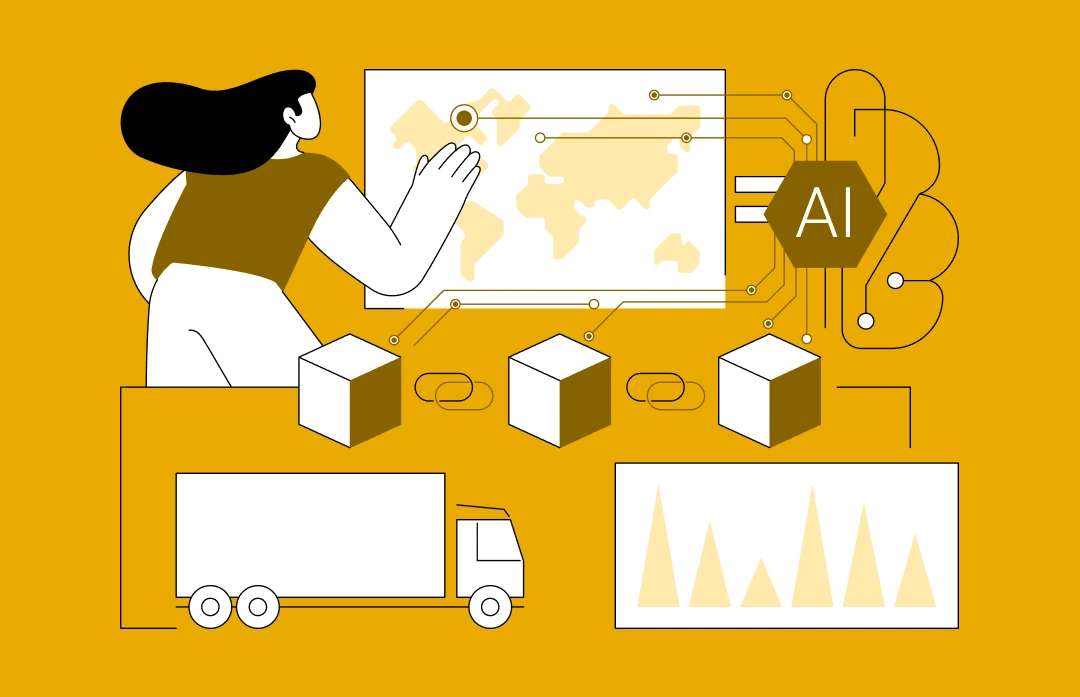
AI in Warehouse Management: Benefits, Use Cases, and Real World Examples
Key takeaways: AI-Driven Optimization: AI enhances warehouse efficiency by automating workflows, reducing errors, and optimizing inventory with real-time data. Cost Reduction: AI cuts operational costs by minimizing labor, storage, and return expenses, with McKinsey noting 5-20% logistics cost savings. Improved Forecasting: AI-powered demand forecasting prevents stockouts and overstocking, improving customer satisfaction and cash flow. Space…

How to Use AI in Personalized Treatment Plans for Diseases?
Key takeaways: AI enables precise, individualized treatment plans by analyzing patient data, genomic profiles, and clinical histories, moving away from generalized protocols. AI models help anticipate medical events and tailor care, improving outcomes through proactive, personalized interventions. AI integrates diverse data sources (EHRs, genetics, imaging) to provide faster, more accurate decision-making in clinical workflows. AI…

RAG vs Fine Tuning: Which AI Approach is Best for Your Business?
Key takeaways: RAG delivers real-time answers using external data—great for fast-changing content. Fine Tuning builds in expertise—ideal for regulated, high-accuracy tasks. RAG is quick to launch, Fine Tuning wins on long-term efficiency. Fine Tuning ensures control, RAG offers flexibility and reach. Hybrid models blend both—perfect for enterprise-grade AI tools. Choose based on use case—RAG for…
